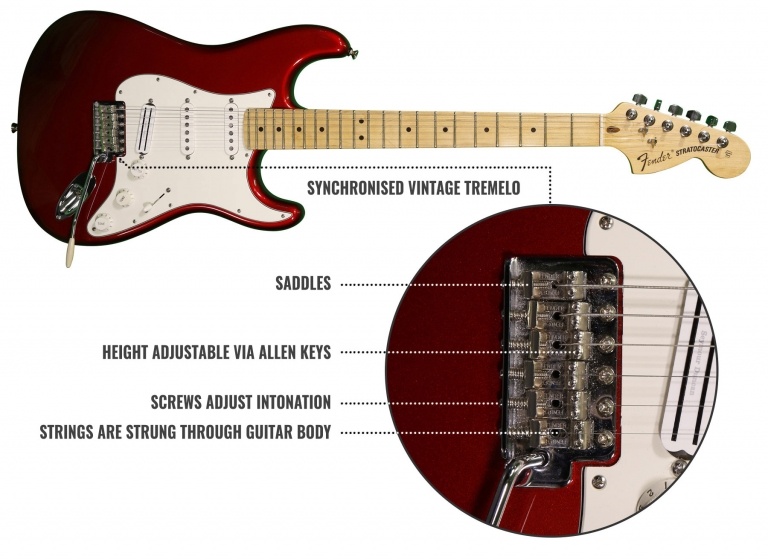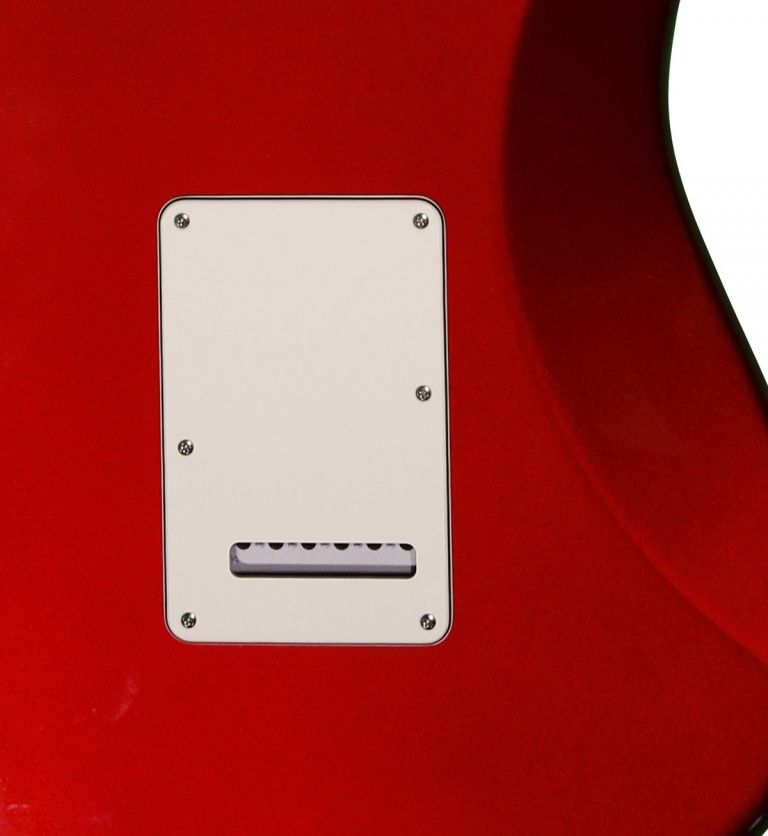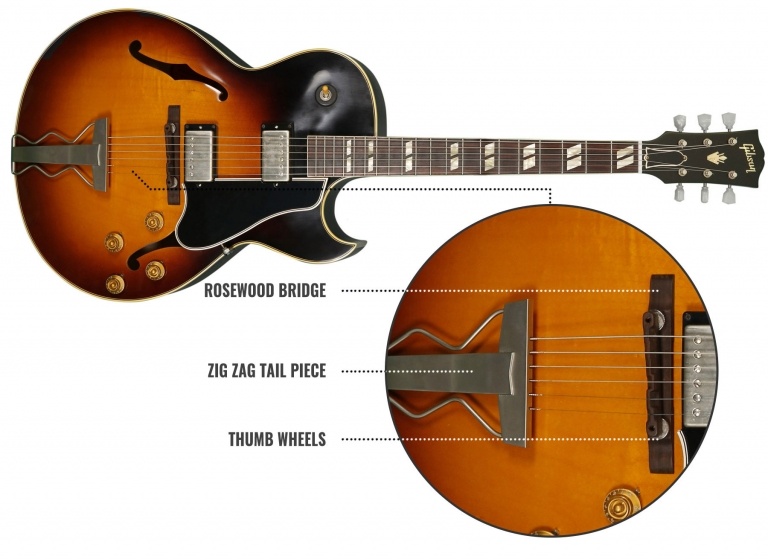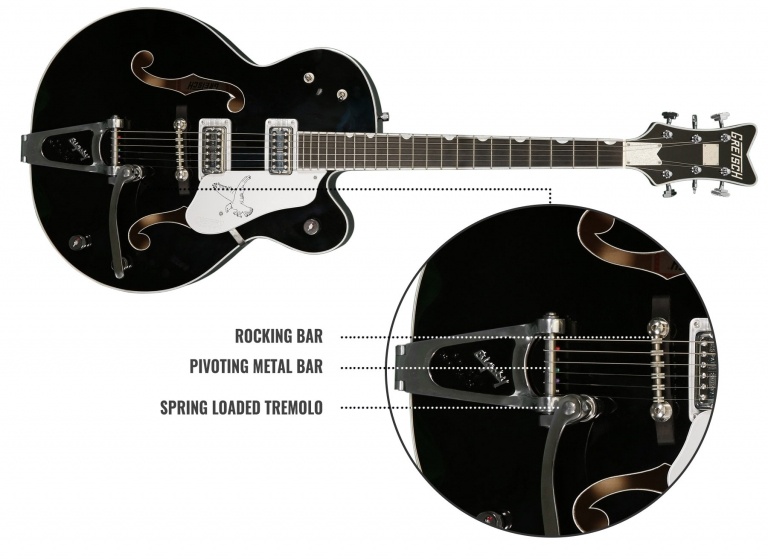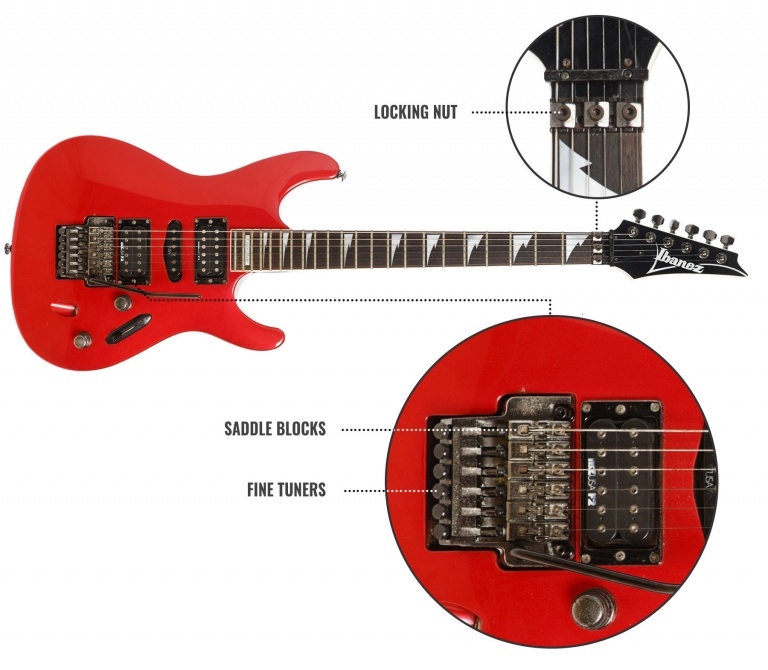Bridges
A guitars bridge can either be a tremolo bridge or a stop tail bridge. A tremolo bridge’s construction features springs and a tremolo arm. The arm which is sometimes referred to as a ‘whammy bar’ is moved by the player either by pushing down, pulling up or by ‘wobbling’ it to change the tension of the springs and therefore the pitch of the strings. The tremelo arm should really be called a vibrato bar as the word vibrato is derived from the Italian word ‘vibrare’ which means to vibrate. This is essentially what the guitarist is doing to the notes produced when using the ‘whammy bar’. This means the word tremolo is incorrectly used as this can mean a single note that is rapidly picked (tremelo picking) or a tremolo effect which is when the volume of a note is raised up and down suddenly creating a cool effect. A stop tail bridge doesn’t feature a tremolo arm. The strings are either strung through the body in the same manner as a Fender Telecaster or strung through the bridge in the way as most Gibson’s.

